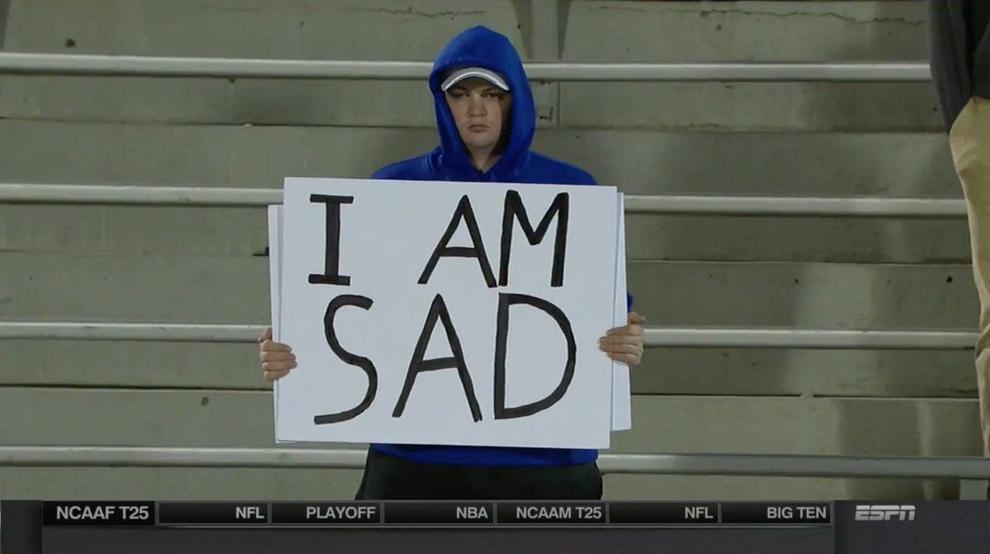Leaderboard
-
in all areas
- All areas
- Records
- Record Comments
- Record Reviews
- Jobs
- Jobs Comments
- Jobs Reviews
- Questions
- Question Comments
- Question Reviews
- Links
- Links Comments
- Files
- File Comments
- File Reviews
- Images
- Image Comments
- Albums
- Album Comments
- Records
- Record Comments
- Events
- Event Comments
- Blog Entries
- Blog Comments
- Topics
- Posts
- Status Updates
- Status Replies
-
Month
-
All time
June 28 2007 - April 16 2024
-
Year
April 16 2023 - April 16 2024
-
Month
March 16 2024 - April 16 2024
-
Week
April 9 2024 - April 16 2024
-
Today
April 16 2024
- Custom Date
-
All time
Popular Content
Showing content with the highest reputation since 03/16/2024 in all areas
-

Floods in Australia.
Cliff and one other reacted to Malcolm Needs for a topic
I hope all of our friends and colleagues in Australia are safe from the awful floods that are being reported from there today.2 points -
Premature baby with Positive Antibody Screen?
John C. Staley and one other reacted to Michelle R for a topic
Interesting update. Received a very small amount of additional sample and performed a manual GEL (BioRad) crossmatch and it was compatible. Decided to try a 3% 3 cell screen (Immucor) converted to 1% for GEL testing and it was also negative. Very different results since we had been seeing pan reactivity in manual GEL previously (about a week ago). Possible preservative antibody that is neutralized (?) or non reactive in LISS tube? Hoping for more sample to perform repeat testing, maybe whatever it was has gone below detectable limits?2 points -
Solid Phase Methodology
John C. Staley and one other reacted to jshepherd for a topic
Hello! I've worked with Immucor over my entire 18 years in the BB - you should be able to reach out to your account rep for the info you are seeking regarding ABID troubleshooting. They have a collection of white papers that can help you. Regarding your Rh negative confirmation in tube - that sounds like something specific to your facility. It's not an Immucor recommendation that I am aware of, nor do we do that at my facility. The CMT plates are literally just a blank microtiter well, so the reactions are very similar to tube, and are read the same way. The trouble with the instrument reading the reactions is that it will not detect mixed field or rouleaux and can have false positives because of that.2 points -
BloodBankTalk: Correct Blood Bank Nomenclature
Malcolm Needs reacted to Razberry for a topic
I just answered this question. My Score PASS1 point -
Great job, we got 20 new newsletter subscribers in March.1 point
-
BloodBankTalk: Correct Blood Bank Nomenclature
Malcolm Needs reacted to Razberry for a topic
I just answered this question. My Score PASS1 point -

TJC change QC to one open vial?
Mabel Adams reacted to Cliff for a topic
Yes, it did change. I cannot remember when. It made a huge difference for us.1 point -
ISBT Webinar: Weak RhD Phenotypes and RHD Genotyping
Sherif Abd El Monem reacted to Razberry for a topic
Thanks for sharing1 point -
Premature baby with Positive Antibody Screen?
Yanxia reacted to Michelle R for a topic
We were thinking an anti-I initially as well but we didn't find much literature about a premature baby forming an anti-I at birth since it appears to be IgM. We were also wondering about other possible antibodies that would be non-reactive or weaker with cord cells. We requested Immunoglobulin tests and received the results today so I will post them for additional information. IgM is double the upper value for the range?? IgM= 45 mg/dL (range for <1 month old is 4-20 mg/dL); they repeated to confirm IgM= 47 mg/dL IgG= 519 mg/dL (range for <1 month old is 649-1627 mg/dL) IgA= <6 mg/dL (range for <1 month old is 0-0 mg/dL)1 point -

BloodBankTalk: What is a “super Coombs” test?
Kris L. reacted to Malcolm Needs for a topic
NOBODY has EVER performed either an Indirect Coombs Test (ICT) (or, still worse, an Indirect Coombes Test), or a Direct Coombs Test (DCT) (or, still worse, a Direct Coombes Test). There is most certainly NOT either an Indirect or Direct AHG Test. AHG is a reagent used in both the IAT and the DAT. The correct terminology for the former test is the Indirect Antiglobulin Test (IAT) and for the latter test is the Direct Antiglobulin Test (DAT). It is true that Coombs was the primary author on three papers describing the test1-3, but Mourant and Race were his co-authors on these papers, and they are often forgotten. Indeed, Coombs himself did not like the test being referred to as the Indirect Coombs Test and the Direct Coombs Test4, particularly as the principle of the test had been described in two papers published in the early 1900s,5, 6. 1. Coombs RRA, Mourant AE, Race RR. Detection of weak and ‘incomplete’ Rh agglutinins: A New Test. Lancet 1945, 246, 15-16. DOI: 10.1016/S0140-6736(45)90806-3. 2. Coombs RRA, Mourant AE, Race RR. A new test for the detection of weak and “incomplete” Rh agglutinins. British Journal of Experimental Pathology 1945; 26(4): 255-266. 3. Coombs RRA, Mourant AE, Race RR. In vivo isosensitization of red cells in babies with haemolytic disease. Lancet 1946; 247: 264-266. DOI: 10.1016/S0140-6736(46)91925-3. 4. Coombs RRA. Historical note: past, present and future of the antiglobulin test. Vox Sang 1998; 74: 67-73. DOI: 10.1046/j.1423-0410.1998.7420067.x. 5. Moreschi C. Neue tatsachen über die blutkörperchenagglutination. Zbl Bakt 1908; 46: 49-51. 6. Friedemann U. Weitere untersuchungen über den mechanismus der anaphylaxie. Z Immunitätsforsch Exp Ther 1 Originale 1909; 2: 591-641 (cited in reference 4).1 point -
Antibody ID
noelrbrown reacted to Bet'naSBB for a topic
HemoBioScience has some "Simulated Patient Plasmas" that work quite well - and "keep" past their expiration. They even work when aliquoted and frozen. We have, in the past, requested "Antibody Containing Plasmas" from our blood suppliers. We use several different suppliers - some will and some won't save them for us. Usually pay a nominal fee - but not nearly as much as manuf. antisera. When we get them, we aliquot and freeze. The least favorite way is - when a patient has an antibody - or you ID a new antibody - we scavenge as many CBC's as possible, combine the plasmas and freeze. We do have some dilute antisera - but as said before - often times does not work as expected.1 point -

Antibody ID
noelrbrown reacted to Cliff for a topic
Hi @Pamo, There are a few options. If you subscribe to a proficiency testing program, you can often save what they send you. WARNING - do not use these samples until after you have received the results if you are a CLIA lab. You can spike your training samples with commercial antisera. These don't always react as expected / hoped for. In my opinion, the best option is to save a recent prior patient sample that is no longer needed or expired. Commercial samples are also available, such as this from Hemo bioscience.1 point -

Temperature mapping in small refrigerator required?
Mabel Adams reacted to John C. Staley for a topic
I have no supporting references but for me, common sense dictates that in a space that small you could not get the probes far enough apart to get any significant temperature variations. Having said that, regulations, requirements or other such problems seldom involve anything resembling common sense. Much like common courtesy, common sense is seldom common.1 point -

Changes to Manufacturer's Inserts
AMcCord reacted to BankerGirl for a topic
We use MediaLab also and scan the package inserts in a job aids. You can revise them the same as you can your policies.1 point -

Using platelets returned in a cooler with ice
Mabel Adams reacted to Neil Blumberg for a topic
Here's one paper that involves extended cold storage of room temperature platelets. They actually seemed more functional. Xu F, Gelderman MP, Farrell J, Vostal JG. Temperature cycling improves in vivo recovery of cold-stored human platelets in a mouse model of transfusion. Transfusion. 2013 Jun;53(6):1178-86. doi: 10.1111/j.1537-2995.2012.03896.x. Epub 2012 Sep 24. PMID: 22998069. Background: Platelet (PLT) storage at room temperature (RT) is limited to 5 days to prevent growth of bacteria, if present, to high levels. Storage in cold temperatures would reduce bacterial proliferation, but cold-exposed PLTs are rapidly cleared from circulation by the hepatic Ashwell-Morell (AM) receptor, which recognizes PLT surface carbohydrates terminated by β-galactose. We cycled storage temperature between 4 and 37°C to preserve PLT function and reduce bacterial growth. Study design and methods: Temperature-cycled (TC) human PLTs were stored at 4°C for 12 hours and then incubated at 37°C for 30 minutes before returning back to cold storage. PLTs stored at RT or at 4°C (COLD) or TC for 2, 5, and 7 days were infused into SCID mice and the in vivo recovery was determined at 5, 20, and 60 minutes after transfusion. Results: PLTs stored for 2 days in COLD had significantly lower in vivo recoveries than RT PLTs. TC PLTs had improved recoveries over COLD and comparable to RT PLTs. After 5- and 7-day storage, TC PLTs had better recoveries than RT and COLD PLTs. PLT surface β-galactose was increased significantly for both COLD and TC PLTs compared to RT. Blocking of the AM receptor by asialofetuin increased COLD but not TC PLT recovery. Conclusion: TC cold storage may be an effective method to store PLTs without loss of in vivo recovery. The increased β-galactose exposure in TC PLTs suggests that mechanisms in addition to AM receptors may mediate clearance of cold-stored PLTs.1 point -
1 point
-

Floods in Australia.
Cliff reacted to Malcolm Needs for a topic
Even worse news today from Sydney, with the horrific knife attack and multiple fatalities. It all seems so unreal, but deepest commiserations to all concerned, including friends, colleagues and family of those concerned. Thank goodness for the extreme bravery of the lady police officer who saved so many lives by shooting dead the perpetrator.0 points

